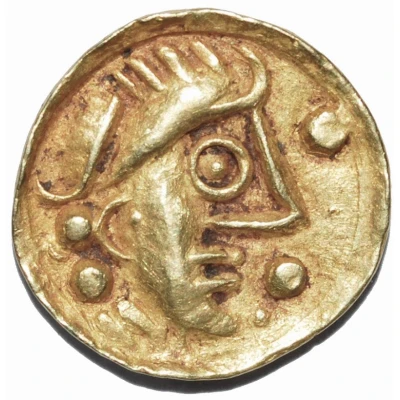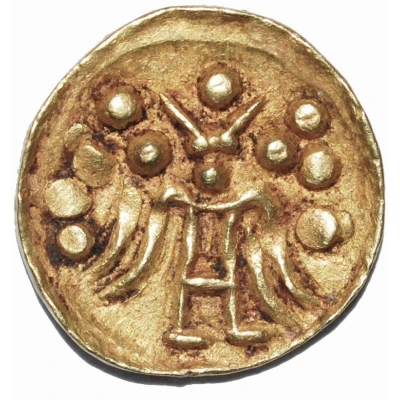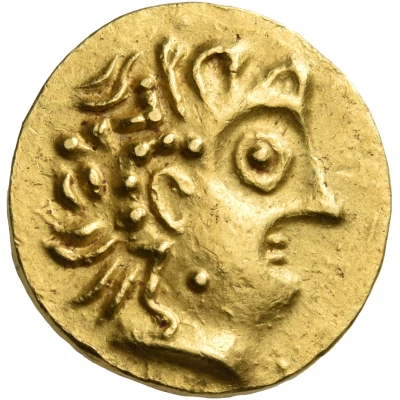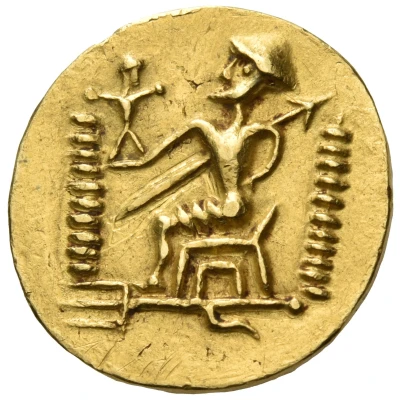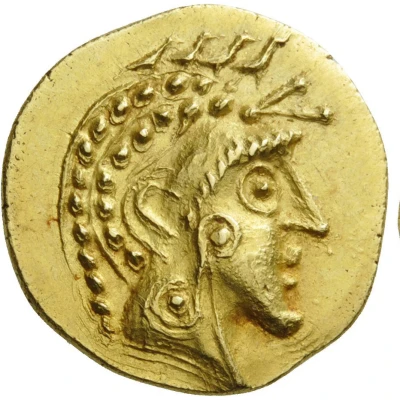
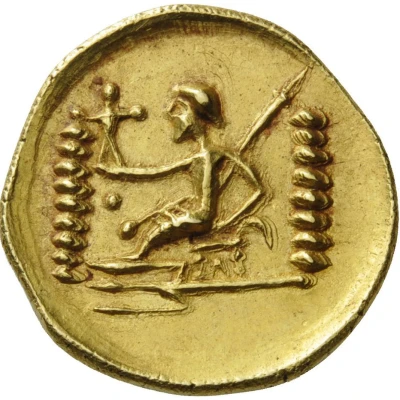

© Nomos AG
Stater - Lysimachos Kolchis imitation 100 BC - 200 AD
| Gold | 5.41 g | 20 mm |
| Issuer | Bastarnae Celto-Scythians (Central and Eastern Europe (ancient)) |
|---|---|
| Type | Standard circulation coin |
| Years | 100 BC - 200 AD |
| Value | 1 Stater = 20 Drachm |
| Currency | Stater |
| Composition | Gold |
| Weight | 5.41 g |
| Diameter | 20 mm |
| Shape | Round (irregular) |
| Technique | Hammered |
| Demonetized | Yes |
| Updated | 2024-10-09 |
| Numista | N#199978 |
|---|---|
| Rarity index | 100% |
Reverse
Crude figure seated to left, holding a small figure on its right arm and a transverse spear in its left; to left and right, vertical line of oblong pellets; below, trident to left.
Comment
This piece is an extraordinary example of a particularly bizarre coinage, one that in the past has been identified as coming from a variety of different places. Early scholars in western Europe assumed it was possibly Balkan or from the area of the Black Sea: that last suggestion was the closest to being right. We now know that these pieces seem to have come from the area of modern Georgia. Up to now they have fallen into two basic types: imitations of staters of Alexander bearing a very rude Athena head and an eagle-like Nike, or imitations of Lysimachos staters with a degraded head of Alexander and a very schematic seated Athena. This piece clearly bears a helmeted head on the obverse, which is probably meant to be Athena but wearing an attic helmet rather than the expected Corinthian one. The reverse is basically copied from late Lysimachos staters minted in Byzantion in the earlier 1st century BC. (source: Nomos AG Auction 13 catalog)Interesting fact
One interesting fact about this coin is that it is an imitation of a coin from the ancient Greek city of Kolchis, which was located in present-day Georgia. The Bastarnae Celto-Scythians, who created this coin, were a nomadic people who lived in Central and Eastern Europe and were known for their skill in metalworking and trade. Despite being an imitation, this coin still holds significant historical value as it showcases the cultural exchange and trade networks that existed between ancient civilizations.
